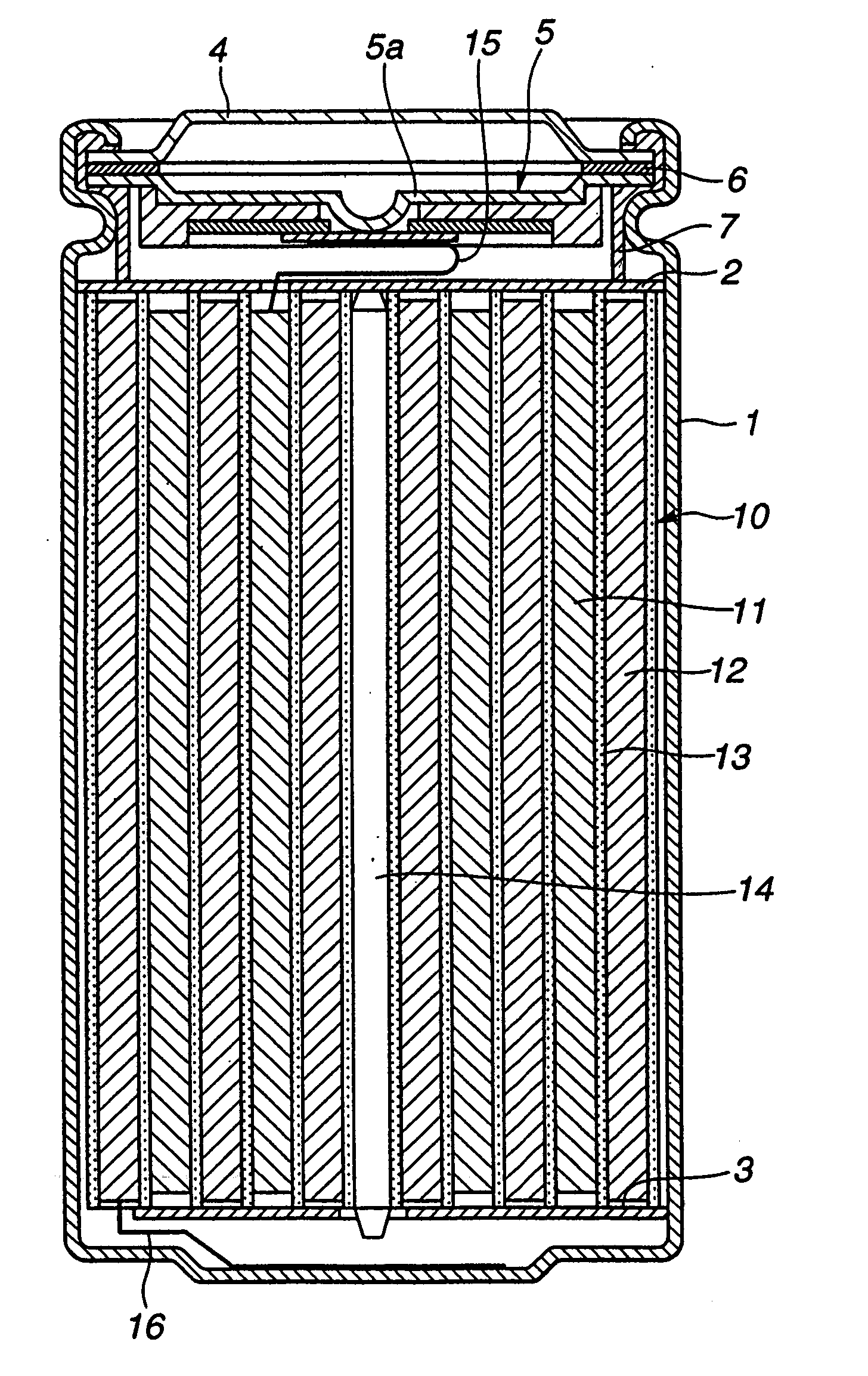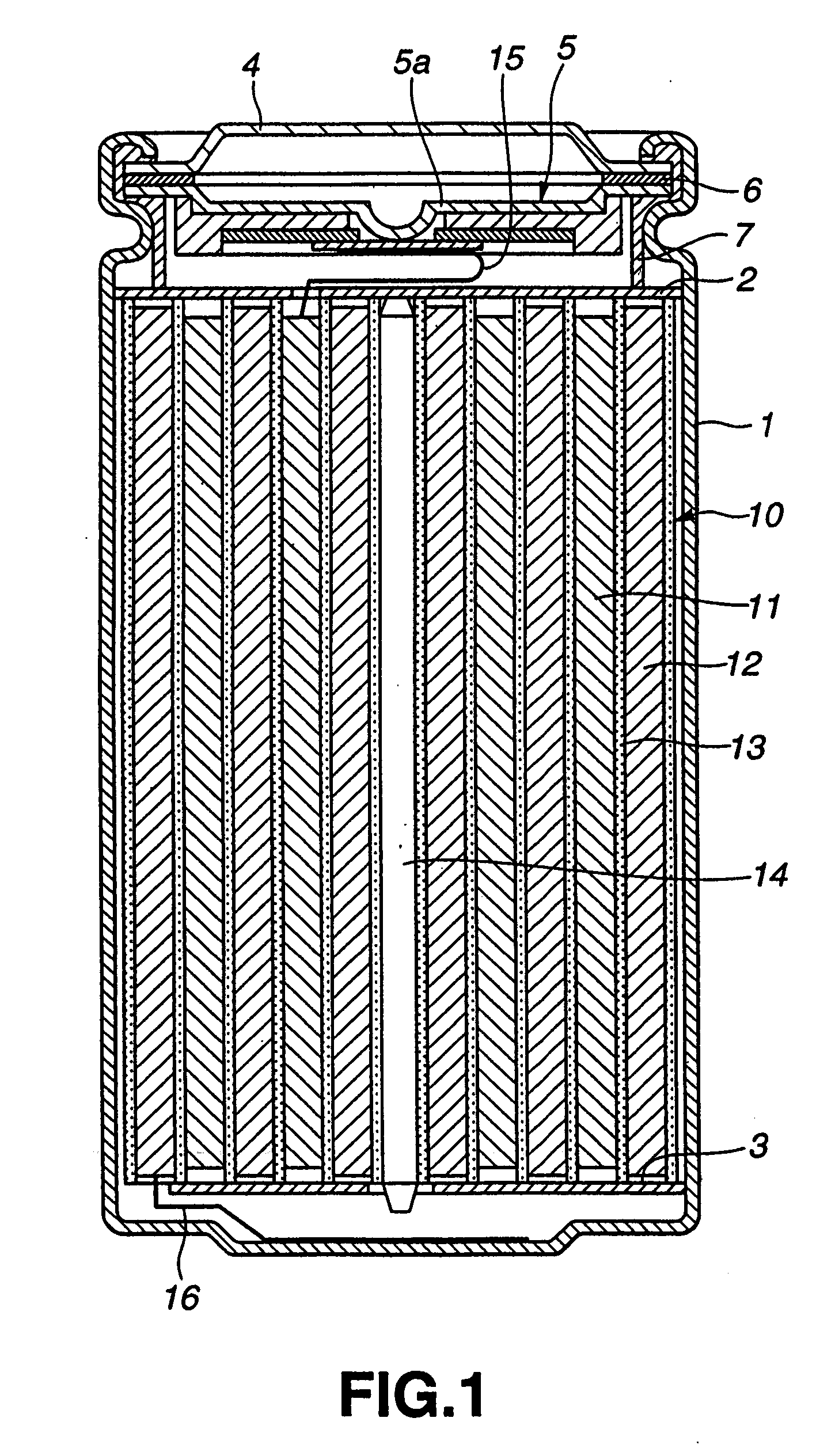Positive active material and nonaqueous electrolyte secondary battery
- Summary
- Abstract
- Description
- Claims
- Application Information
AI Technical Summary
Benefits of technology
Problems solved by technology
Method used
Image
Examples
example 1
[0059] Now, Examples of the present invention will be described on the basis of specific experimental results. However, it is to be understood that the present invention is not limited to the Examples.
experiment 1-1
[0060] Initially, the numerical ranges of y and z in LimCoxAlyMgzO2 were examined.
Sample 1
[0061] Firstly, a positive active material was manufactured as described below. Commercialized lithium carbonate, cobalt oxide, aluminum hydroxide and magnesium carbonate were mixed together in the mole ratio of Li, Co, Al and Mg 1.02:0.98:0.01:0.01. The obtained mixture was sintered in dry air current by using a crucible made of alumina. When the produced powder was quantitatively analyzed by an atomic absorption analysis method, the.composition of LiCo0.98Al0.01Mg0.01O2 was recognized. When an X-ray diffraction measurement was carried out for this powder, it was recognized that the pattern of the powder was similar to the pattern of LiCoO2 existing in 36-1004 of the ICDD (International Centre for Diffraction Data) and formed a similar layer structure to that of LiCoO2.
[0062] When the amount of lithium carbonate included in the powder was measured, it was recognized that the lithium carbon...
experiment 1-2
[0083] Subsequently, other elements constituting LimCoxAyBzO2 were examined.
Sample 10
[0084] The powder of LiCo0.98Al0.01Ca0.01O2 was manufactured in the same manner as that of the Sample 1 except that calcium carbonate was used in place of magnesium carbonate. This powder was used as the positive active material to manufacture a nonaqueous electrolyte secondary battery.
Sample 11
[0085] The powder of LiCo0.98Cr0.01Mg0.01O2 was manufactured in the same manner as that of the Sample 1 except that chromium oxide was used in place of aluminum hydroxide. This powder was used as the positive active material to manufacture a nonaqueous electrolyte secondary battery.
Sample 12
[0086] The powder of LiCo0.98V0.01Mg0.01O2 was manufactured in the same manner as that of the Sample 1 except that vanadium oxide was used in place of aluminum hydroxide. This powder was used as the poistive active material to manufacture a nonaqueous electrolyte secondary battery.
Sample 13
[0087] The powder of ...
PUM
 Login to View More
Login to View More Abstract
Description
Claims
Application Information
 Login to View More
Login to View More - R&D
- Intellectual Property
- Life Sciences
- Materials
- Tech Scout
- Unparalleled Data Quality
- Higher Quality Content
- 60% Fewer Hallucinations
Browse by: Latest US Patents, China's latest patents, Technical Efficacy Thesaurus, Application Domain, Technology Topic, Popular Technical Reports.
© 2025 PatSnap. All rights reserved.Legal|Privacy policy|Modern Slavery Act Transparency Statement|Sitemap|About US| Contact US: help@patsnap.com


